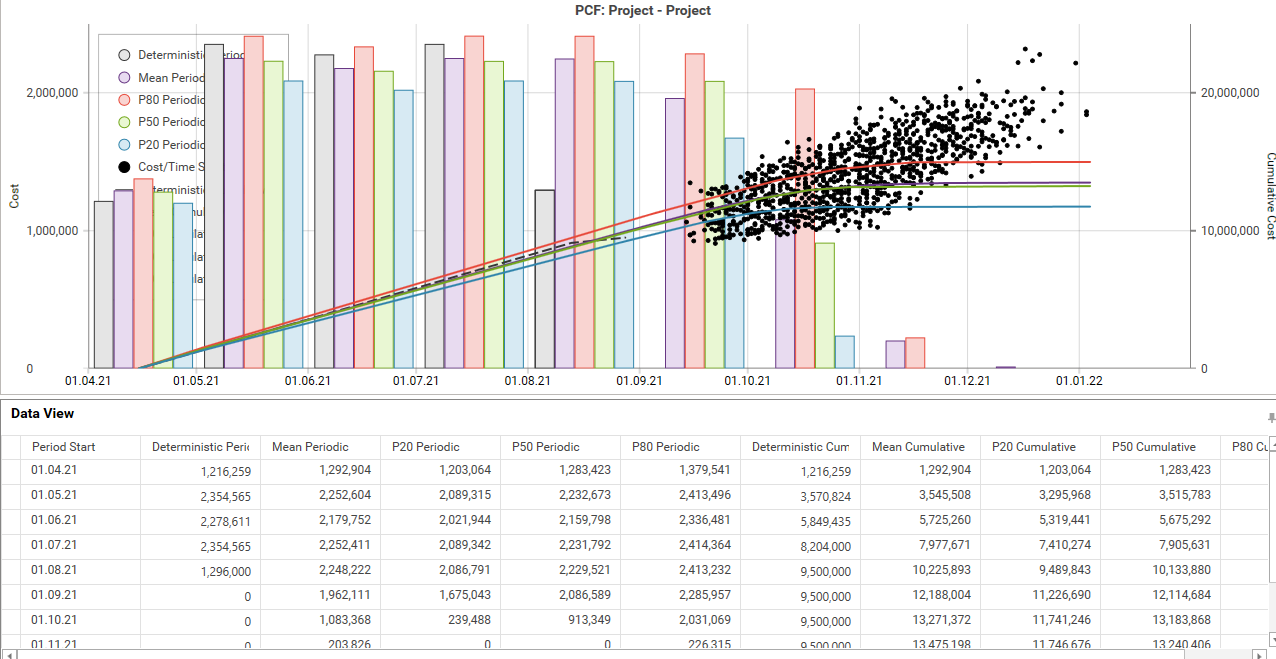GleeYM Inc. offers quantitative cost and schedule risk analysis for small, medium, and large mega-complex capital projects. The Quantitative Risk Analysis (QRA) helps to determine probabilistic completion date and cash flows (PCF).
The Quantitative Schedule Risk Analysis (QSRA) focuses on uncertainty and risks that affect the overall schedule, i.e., activity durations and completion dates. SRA starts with reviewing the project schedule and performing schedule quality checks as specified by DCMA 14 points.


The Quantitative Cost Risk Analysis (QCRA) is performed on project financials and cost estimates using Monte Carlo Simulation (MCS). Cost is the main driver for making decisions. It’s the key factor that makes the management happy or unhappy. Business is all about monetary benefits.
Integrated Cost and Schedule Risk Analysis (IRA) is performed on Level - I or Level - II or Level-III schedule loaded with time-phased cost estimates. Cost and schedule risk analysis is performed using Monte Carlo simulation (MCS). cost and schedule risks are linked to activities. Activities are correlated to avoid merge bias. It is important to re-run the simulation and visualize the result.

A schedule risk analysis (SRA) uses a risk-based project schedule (derived from the master schedule) to apply statistical techniques to envisage a level of confidence in meeting a project’s completion date. The analysis focuses on uncertainty and risks that affect the overall schedule, i.e., activity durations and completion dates. SRA starts with reviewing the project schedule and performing schedule quality checks as specified by DCMA 14 points.
A sequence of activities and activity relationships plays an important role in avoiding “Garbage in and Garbage out”. Also, visit https://www.gleeym.com/services/riskmanagementsystem/
Schedule risk analysis (SRA) helps to analyze the uncertainty in the project schedule using Monte Carlo Simulation. Deterministic schedule duration and finish date don’t provide enough information to answer flowing questions:
SCR scope is:

Do you want to implement risk analysis/management software? click following link for details:
SOFTWARE
There can be several other parameters that can contribute to quality SRA. Like:


Integrated Cost and Schedule Risk Analysis (IRA) is performed on schedule level – I, Level – II and Level -III loaded with time phased cost estimates.
Aligning resources to remain competitive and meeting strategic goals are cumbersome in this era of “Digital Transformation”. Digital transformation is reshaping the corporate world. Pursuing the digitizing requires a sense of urgency, change management agents, and the ability to choose the optimal decision based on the data. Decision making requires Data as input and presenting data in the form of alternatives/options to select the best one i.e. Risk-Based Decision Making.
In the concept phase, the project initial phase, presenting alternatives and choosing the best one is the key to success. Collecting data, reshaping the data, defining correlation and keeping eye on key risk drivers certainly helps to come to a conclusion and get buy-in from the key stakeholders. Presenting numbers/analytics to board members or partners are always a “Game Changer” to win.
Decision Tree Analysis helps to portray various decisions with data. Decision Tree infused with Date helps to determine optimal path and display combination of inputs for the corresponding output. It helps to better understand the uncertainties associated with the data and perform further analysis as per requirement for decision making.

Offer services to identify risks and perform Quantitative Schedule Risk Analysis (QSRA) and Quantitative Cost Risk Analysis (QCRA) for mega complex projects in industries like
1- Capital Project PetroChemical Construction Mega Project- https://go.palisade.com/WBN2020-08-14CapitalProjectPetrochemical.html
2- Digital Product Development and Decision Making under Uncertainty –
https://go.palisade.com/WBN2020-09-11DigitalProductDevelopment.html
GleeYM Inc. have an experience of managing projects, program and portfolio Management ranging from $ 100 K to $ 10 B. Deployed system and implemented software. Experience with developing quantitative schedule and cost risk analysis. Facilitated dozens of risk workshops. Moreover, performing advanced risk modelling for what-if analysis using spreadsheets, etc.
1- Need project Scope
2- Project Charter
3- Project Management Plan
4- Project Schedule
5- Project Cost Estimates
email us at marketing@gleeym.com for details.
Yes. We are well versed in developing risk models using excel and then perform quantitative risk analysis using Monte Carlo simulation (MCS). We have an extensive experience with @Risk. However, we are open to use Risk software as per client’s demand.
Yes. We have an extensive scheduling experience.

Integrated Cost & Schedule Risk Analysis (IRA) is a combination...

https://youtu.be/UI3vLypk3jk

GleeYM offers training on Integrated Cost & Schedule (IRA) Risk...

GleeYM offers online training on Schedule Risk Analysis (SRA) using...
Don’t miss our future updates! Get Subscribed Today!